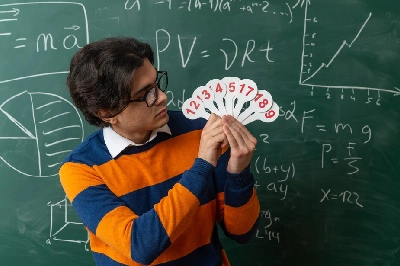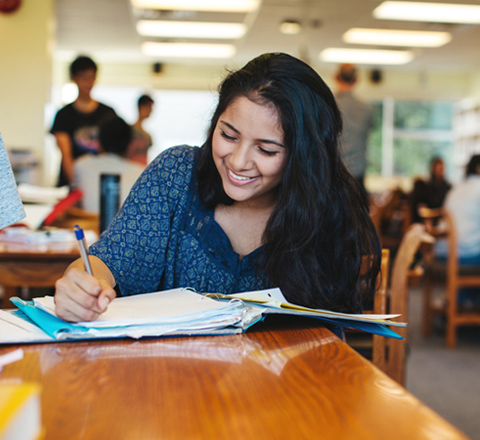Step-by-step approaches To solving rational expressions using online algebra 2 tools
Wiki Article
The Comprehensive Insurance Coverage of Algebra 2 Tutoring: Key Principles and Skills for Proficiency
Algebra 2 tutoring offers a wide range of crucial ideas and skills essential for trainees to accomplish mastery in maths. This incorporates a thorough understanding of polynomial functions, complex numbers, and logarithmic formulas, among others. Each topic constructs on the previous one, creating a natural framework for analytic. The application of these concepts in real-world scenarios highlights their relevance. Yet, there continue to be critical locations that can further enhance a trainee's mathematical trip.Recognizing Polynomial Functions
Exactly how do polynomial features shape the landscape of algebra? These basic expressions, including variables elevated to non-negative integer powers, function as the foundation of many algebraic principles. They can be identified by their degree, which shows the greatest power of the variable, and their coefficients, which establish the feature's actions. Polynomial functions show unique residential or commercial properties, such as continuity and smoothness, enabling them to design a selection of real-world situations. Their visual depictions include curves that can show various actions, including intercepts and turning factors. Recognizing polynomial functions includes understanding procedures such as enhancement, reduction, multiplication, and division, in addition to factoring techniques. This fundamental knowledge is vital for solving equations and inequalities. By grasping polynomial functions, students develop critical analytic abilities and obtain understanding into much more complex mathematical principles, paving the way for innovative studies in algebra and beyond.Grasping Complicated Numbers

Meaning and Residence
Intricate numbers, a keystone of innovative algebra, prolong the idea of one-dimensional number lines to a two-dimensional plane. Specified as varieties of the type (a + bi ), where (a) and (b) are real numbers and (i) represents the fictional unit with the residential property (i ^ 2 = -1 ), these numbers have distinct buildings. The actual part (a) indicates the horizontal axis, while the imaginary part (b) shows the vertical axis in the complicated plane. Key residential properties include their ability to stand for options to polynomial formulas that do not have actual options and their closure under enhancement, department, reduction, and reproduction (except by zero) This structure enables a deeper understanding of mathematical ideas and applications throughout different areas.Operations With Facility Numbers
Operations with complex numbers develop an important element of algebra that enhances mathematical understanding and problem-solving capabilities. Intricate numbers, revealed in the form (a + bi), where (a) and (b) are real numbers, require specific operations like enhancement, reproduction, reduction, and department.Enhancement and reduction entail incorporating like terms, while multiplication makes use of the distributive home and the fact that (i ^ 2 = -1) Division of complicated numbers demands increasing the numerator and denominator by the conjugate to eliminate the fictional component in the common denominator. advanced algebra.
These procedures not just reinforce foundational algebra skills however additionally prepare students for advanced subjects, such as polynomial formulas and square functions. Proficiency of intricate number procedures equips learners with critical logical tools.
Exploring Logarithmic Equations
In the research of logarithmic equations, comprehending the residential properties of logarithms is important for effective problem-solving. These homes give the fundamental tools needed to control and simplify logarithmic expressions. By grasping these ideas, students can with confidence deal with a selection of logarithmic formulas.Understanding Logarithm Characteristics
Logarithm buildings play an important duty in streamlining and resolving logarithmic formulas, supplying an organized technique to understanding their behavior. These residential or commercial properties consist of the item, power, and quotient policies. The product policy mentions that the logarithm of an item is the amount of the logarithms of its variables. On the other hand, the quotient guideline shows that the logarithm of a quotient is the difference of the logarithms. The power regulation exposes that the logarithm of a number raised to an exponent can be shared as the backer increased by the logarithm of the base. Mastery of these homes enhances one's ability to manipulate logarithmic expressions, providing a structure for dealing with much more intricate formulas and features come across in innovative algebra.Addressing Logarithmic Equations
Just how can one successfully resolve logarithmic equations? To take on these formulas, it is important to use homes of logarithms. One need to settle logarithmic expressions utilizing the item, ratio, and power guidelines. This simplification frequently transforms the equation into a more convenient type. Next, converting logarithmic equations to their rapid kind can expose the unidentified variable. As an example, the formula (log_b(x) = y) translates to (x = b ^ y ) Furthermore, examining services is important to assure they do not create extraneous results, especially when handling logarithms. By systematically applying these methods, people can with confidence browse and solve logarithmic formulas, improving their general understanding and mastery of this mathematical principle.Evaluating Sequences and Collection
Although sequences and collection might at first show up complicated, they are basic ideas in algebra that reveal patterns and relationships within numbers. A sequence is a listing of numbers organized in a specific order, typically specified by a formula or policy. Recognizing the sorts of sequences, such as arithmetic and geometric series, enables trainees to determine the underlying patterns efficiently.On the other hand, a collection is the amount of the terms of a sequence. Examining collection includes acknowledging infinite and finite collection, along with determining their amounts when suitable. Trainees find out vital methods, such as using formulas for the amount of math and geometric collection, which streamline computations.
Understanding series and collection furnishes pupils with essential problem-solving skills, enabling them to take on much more complex mathematical ideas. This foundation this contact form is essential for their proceeded success in algebra and higher-level maths.
Addressing Rational Expressions and Formulas

When resolving sensible formulas, one should isolate the variable, commonly by cross-multiplying to get rid of the portions. It is essential to examine for nonessential solutions, as increasing both sides can present values that do not please the original formula. On top of that, trainees need to recognize constraints on the variable, as specific values can make the absolutely no, providing the expression undefined.
Grasping Conic Sections
Conic sections are geometric numbers stemmed from the intersection of a plane and a double cone. These areas consist of circles, ellipses, parabolas, and hyperbolas, each differentiated by unique residential properties and equations. Understanding conic sections is vital for students as they explore the relationships between algebra and geometry.
Circles are defined by a consistent range from a center factor, while ellipses arise from an airplane puncturing both cones, forming a shut curve. Parabolas occur from an airplane alongside the axis of the cone, illustrating a U-shaped graph. Hyperbolas, on the other hand, take place when the plane cuts in half both intersects of the cone, resulting in 2 unique, open curves.
In Algebra 2, mastering conic areas includes acknowledging their typical equations, graphing them properly, and identifying their key attributes, such as foci, vertices, and axes. This fundamental understanding prepares trainees for more sophisticated mathematical concepts.
Using Charts and features
Graphs and functions function as essential tools in Algebra 2, allowing pupils to model partnerships between variables and imagine mathematical principles. Mastery of these aspects allows learners to analyze data, determine patterns, and make forecasts based upon established patterns. Trainees explore various kinds of features, including direct, quadratic, polynomial, reasonable, and exponential, each with distinct features and applications.Graphing these functions involves comprehending crucial functions such as intercepts, asymptotes, and slopes, which offer understandings right into their actions. Additionally, trainees find out to change functions with shifts, stretches, and reflections, improving their capability to control and examine visual representations.
Applying features in real-world contexts even more strengthens understanding, as students deal with issues entailing revenue margins, population development, and physics equations. This functional application bridges theoretical expertise with tangible end results, cultivating a deeper admiration for the relevance of features and graphs in day-to-day life.
Often Asked Concerns
Exactly How Can I Enhance My Problem-Solving Abilities in Algebra 2?
To improve analytical abilities in Algebra 2, one should practice frequently, look for diverse troubles, utilize on-line sources, collaborate with peers, and focus on understanding underlying ideas instead of remembering procedures, fostering deeper comprehension and application.What Resources Are Recommended for Additional Algebra 2 Practice?
Advised resources for additional Algebra 2 practice include online platforms like Khan Academy, books with technique problems, and tutoring services. Participating in mathematics online forums can additionally supply diverse analytical techniques and collective understanding chances.Exist Online Tutoring Options Available for Algebra 2?
Yes, various online tutoring options exist for Algebra 2 (algebra 2 tutor). Systems like Khan Academy, Chegg Tutors, and Wyzant deal individualized assistance, video lessons, and interactive exercises, accommodating different discovering designs and routines for pupils seeking assistanceExactly how Do I Plan for Algebra 2 Tests Efficiently?
To prepare properly for Algebra 2 examinations, one should evaluate vital ideas, method troubles consistently, use on the internet sources, develop study hall, and take technique tests to determine strengths and weaknesses for targeted renovation.
What Prevail False Impressions Trainees Have in Algebra 2?
Pupils typically misinterpret the value of foundational ideas, believing they can miss prerequisites. They might additionally have problem with abstract thinking, perplexing functions with formulas, and misunderstanding the duty of variables in algebraic expressions.Understanding complex numbers is important for trainees in Algebra 2, as these numbers extend the real number system to solve equations that lack actual services. These procedures not only strengthen foundational algebra skills but also prepare pupils for more innovative topics, such as polynomial equations and quadratic functions. Sensible expressions and equations represent important elements of algebra, involving portions where the numerator and denominator are polynomials. In Algebra 2, understanding conic areas entails identifying their typical formulas, graphing them accurately, and determining their essential attributes, such as emphases, axes, and vertices. Using features in real-world contexts additionally solidifies understanding, as trainees take on troubles including profit our website margins, population growth, and see it here physics equations.
Report this wiki page